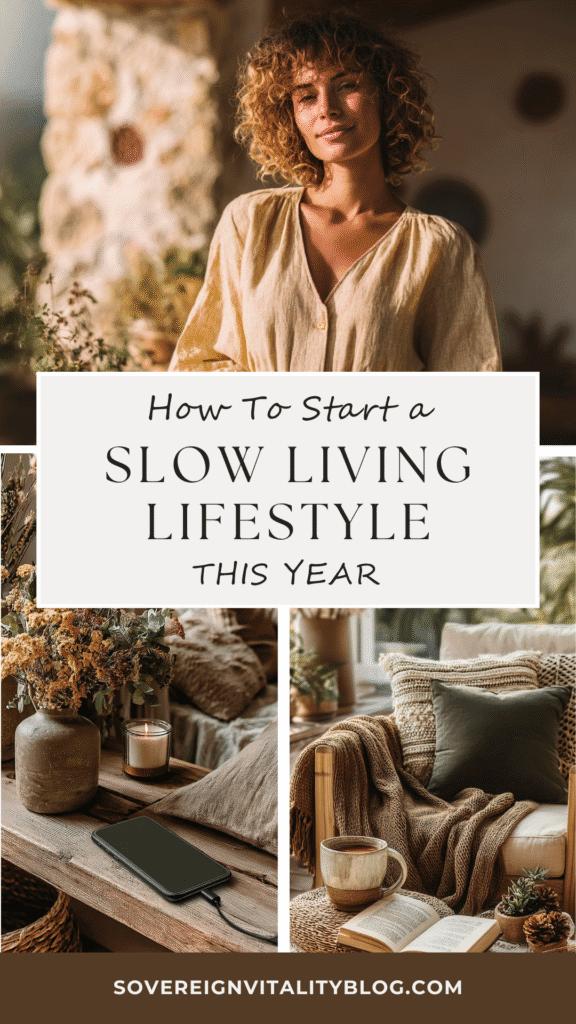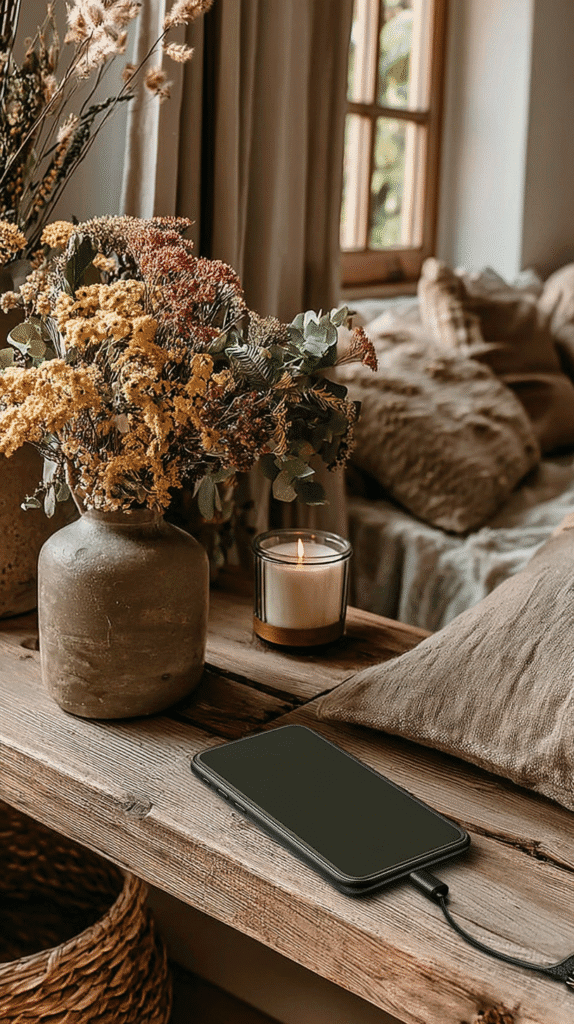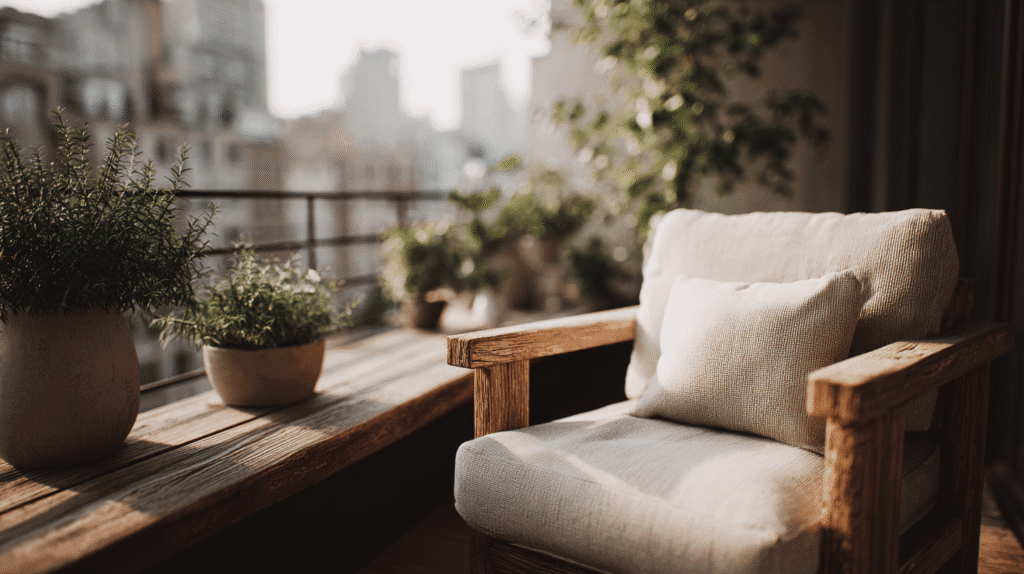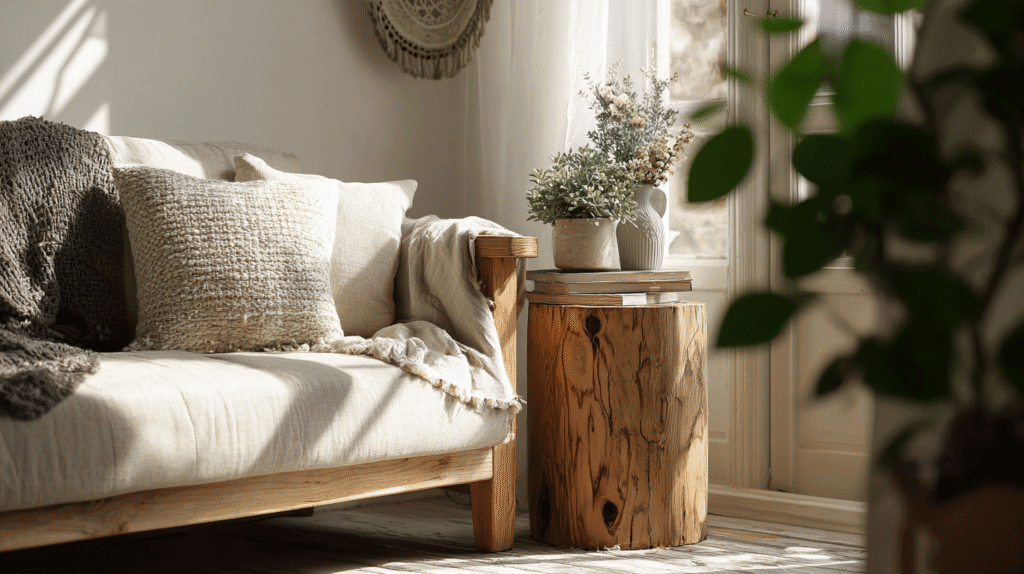This post may contain affiliate links, including those from Amazon Associates. If you make a purchase through these links, I may earn a commission at no additional cost to you. Learn more about our affiliate policy.
Sometimes mornings arrive a little heavy. The sunlight spills through the curtains, soft and golden, but before we even take a breath, the weight of to-do lists and notifications pulls us away from that stillness.
I’ve felt that tug so many times, the rush of modern life pressing in when all I long for is more space, more ease, more presence.
The truth is, slow living isn’t about doing nothing or moving to a cabin in the woods.
It’s about choosing what matters most and allowing the rest to fall away.
It’s a way of reclaiming sovereignty in a world that glorifies hustle, and of remembering that life has its own rhythm if we are willing to listen.
If this is the year you feel called to soften, here are the steps that have helped me begin.

Begin with Your Why
Every shift starts with awareness.
Ask yourself: “Why do I want to live more slowly?”
Maybe you feel depleted by endless scrolling or constant multitasking. Maybe you’re craving more connection with your children, your partner, or yourself. Or perhaps your body has been showing signs of overwhelm in the form of stress headaches, shallow breathing, or restless sleep.
Write down what feels unsustainable in your life, and then write what you desire instead.
Presence. Calm. Spaciousness.
These words become anchors you can return to when the busyness of the world tries to sweep you back in.
Make Small Shifts in Daily Rhythm

You don’t need to overhaul your entire schedule to start slow living. Begin with a few intentional morning practices that help your nervous system exhale.
For me, this has meant stepping away from my phone in the first hour after waking and letting quiet light guide my mornings instead of a glowing screen.
Consider creating an evening ritual too, one that signals to your body and mind it is time to rest and sleep deeply.
Lighting a candle, brewing a cup of herbal tea, or journaling for ten minutes can bring you back to yourself.
If sleep is an area you’d like to nurture, you may find encouragement in these natural remedies for better sleep, which naturally support rest and relaxation in your nightly rhythm.
Simplify Your Space
Our surroundings speak to us constantly. When surfaces are cluttered or corners feel cramped, our minds carry that same weight.
Slow living invites us to shape our homes into havens of calm. This doesn’t mean buying new furniture or redecorating everything at once. It can be as simple as clearing a kitchen counter, folding a soft throw across your chair, or placing a plant where your eyes can rest.
I’ve noticed that when my space feels lighter, my breath follows suit.
If you’re looking for inspiration, you might enjoy these ideas for creating a nervous system friendly sanctuary at home.
Create Boundaries with Technology

One of the most transformative shifts in my own journey was learning to set boundaries with technology.
Constant pings and updates trick us into believing we must always be available, but true presence requires space away from screens.
Try choosing one pocket of the day to rest your devices. Dinner time, the hour before bed, or even your morning commute can become sacred tech-free zones. This small act of sovereignty reminds you that you are not tethered to the demands of digital life.
You might also find it helpful to explore these activities to try during a dopamine detox as ways to reset your mind and body away from constant digital stimulation.
Reconnect with Nature

Slow living and nature walk hand in hand. Even in the city, there are ways to feel the earth’s rhythm.
A walk through a nearby park, sitting under a tree, or tending to a balcony garden can restore perspective.
Seasons remind us that change is natural, that rest has its place, and that beauty often unfolds in cycles rather than in constant growth.
Grounding practices, sometimes called “earthing,” can be as easy as stepping barefoot into the grass or breathing deeply as you watch the clouds move overhead.
If your heart longs for more ideas here, you might enjoy my reflections on ways to connect with nature when you live in a city.
Practice Mindful Consumption

Slow living extends into how we eat, shop, and consume.
Choosing whole foods over processed ones, quality over quantity, and timeless items over fleeting trends makes a difference not only in your life but also in the health of the planet.
Cooking at home with seasonal ingredients can become a form of mindfulness.
Notice the colors of your vegetables, the aroma as they roast, the way your body feels after eating. Slow living is less about restriction and more about savoring what nourishes you fully.
For more tips on mindful eating see my post on clean eating meal planning for beginnners.
Let Rest Become Sacred
Rest is not laziness, it is an act of resistance against a culture that demands endless productivity.
Slow living calls us to honor rest as essential, not optional. This may look like a quiet afternoon nap, reading without guilt, or simply staring out the window for a few moments.
The nervous system thrives when we give it room to recalibrate.
As you slow down, you may notice old feelings of guilt arise. Let them pass. Remind yourself that you are human, and humans are designed to move with rhythms of effort and ease.
Adapt Season by Season
One of the most beautiful truths of slow living is that it flows with the seasons.
In winter, the pace may be inward and reflective. In spring, it may be about fresh starts and tending small growth. Summer can be expansive, filled with light and energy, while autumn brings the invitation to let go and turn inward again.
Notice how your body responds in each season. Create rituals that align with the shifts around you.
Even something as simple as cooking a seasonal meal or taking a walk at dusk can help you feel more connected to the natural rhythm of time.
Start Small, Stay Slow
The greatest gift you can give yourself this year is permission to begin slowly. You don’t need to clear your schedule, redecorate your home, and meditate daily all at once. Choose one or two shifts that feel nourishing, and let them root into your days.
Slow living isn’t a checklist. It’s a way of inhabiting your life more fully. Over time, you’ll notice more breath, more beauty, more sovereignty in how you choose to move through the world.
As I’ve walked this path, I’ve learned that it’s less about perfection and more about presence. Every choice to pause, every moment of savoring, is a step toward a life that feels truly yours.
So take a deep breath. Begin where you are. And let this year be the one where you honor your pace, your rhythms, and your right to live slowly.



